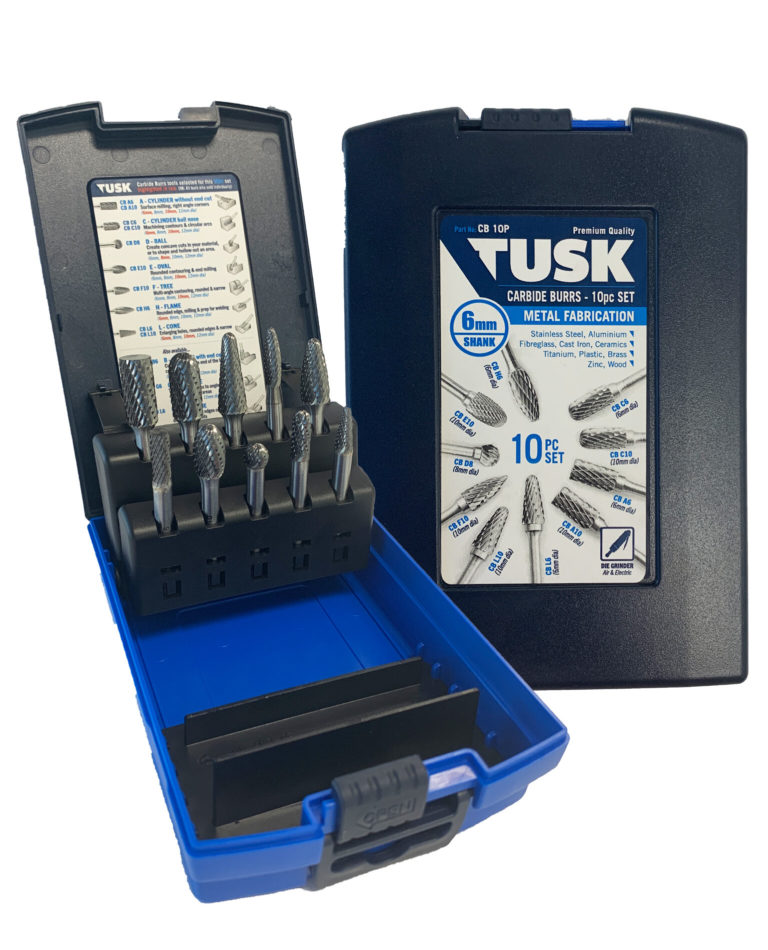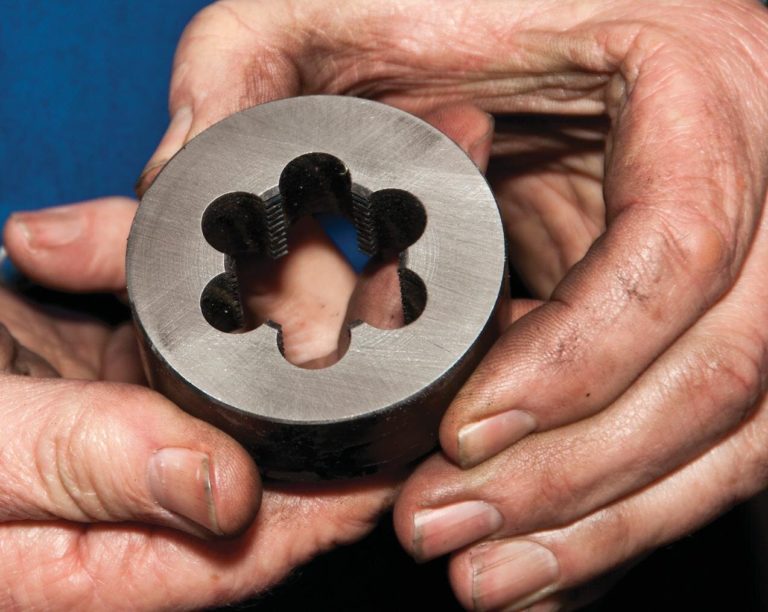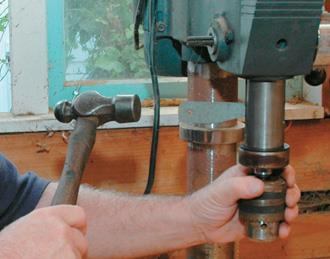When choosing an air compressor, you need to know the free air delivery (FAD)
By Hamish Brown
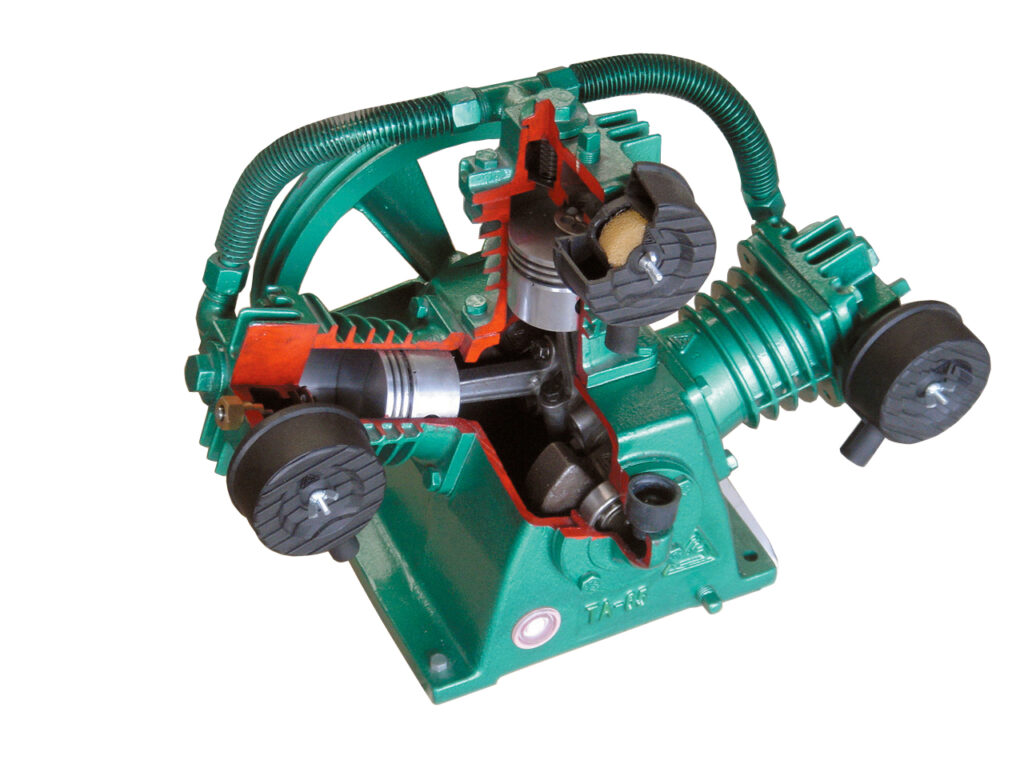
Selecting the correct air compressor for a particular job should be a relatively painless exercise. The right choice will provide you with a useful machine that can last for many years, provided you maintain it well.
But far too often, choosing a compressor can come down to a random weighing-up of price, cosmetic appearance, or misinformation about the compressor’s specification. In fact, the most important thing to consider is the air consumption of any tool to be used with the compressor.
The saying, “You wouldn’t buy a Mini to tow a boat,” holds true. If the compressor is too small for the job, either the tool won’t work or the tool will work below an acceptable level. It is also possible the compressor will fail.
Need to consider The things you need to consider when buying an air compressor are the same as for any power tool. Firstly, the quality and performance of the compressor will be dependent directly on the price. But you also need to think about several important factors.
1 Choose a good retailer
When looking for a retailer, choose someone you have bought tools from previously and with whom you have confidence. Buy from an outlet with a good reputation where the staff has a working knowledge of the products they sell, where future service can be assured and parts and accessories are available.
2 Check the air delivery
Most air tool packaging will have marked on the box the AIR CONSUMPTION of the tool. This is the minimum amount of air required to make the tool operate. When more than one tool is used at the same time, the air consumption of each tool must be added together. The rated output of the air compressor should exceed the air consumption required by the tool.
Free air delivery Most air compressors now state on the machine the FAD or “Free Air Delivery” of the compressor in either cfm (cubic feet per minute) or l/m (litres per minute). This is the output. Marketers of air compressors who are members of the CAAA (Compressed Air Association of Australasia) have FAD clearly marked on the compressor, either on the air receiver or some other clearly visible part. An air compressor sold on the basis of horsepower, air displacement, air receiver size, number of cylinders or number of stages can be misleading, cause confusion and lead to a wrong choice. The only true measure of a compressor’s effectiveness is FAD or Free Air Delivery.
3. Calculate the duty cycle needed
You need to ask the question: How often will you use the tool—not very often, frequently, or something in-between? This will determine what kind of compressor you buy.
For short jobs like using an air blowgun to clean a workbench, you need to select a compressor with an output to match the consumption of the tool (note: some air blowguns can consume a lot of air).
For jobs of continuous duty like spray painting, the output of the air compressor must exceed the air consumption of the tool by up to 100 percent, depending on the type of compressor (whether heavy-duty and rated for continuous use, or less than heavy-duty).
Tools used intermittently such as an impact wrench will have different air requirements. Ask yourself whether you want the compressor for DIY, or is it crucial to your trade or livelihood, where a larger output compressor should be selected?
Choosing a compressor is not as daunting as it seems, provided you know the air consumption required by the tool. If you intend to use a number of different tools, size the compressor to the requirements of the most demanding tool. If in doubt, seek advice from a reputable dealer.
So far, we have kept numbers out of the equation and not even referred to what makes up a compressor. Providing you get correct advice about air consumption and output, you don’t need to know the components of a compressor.
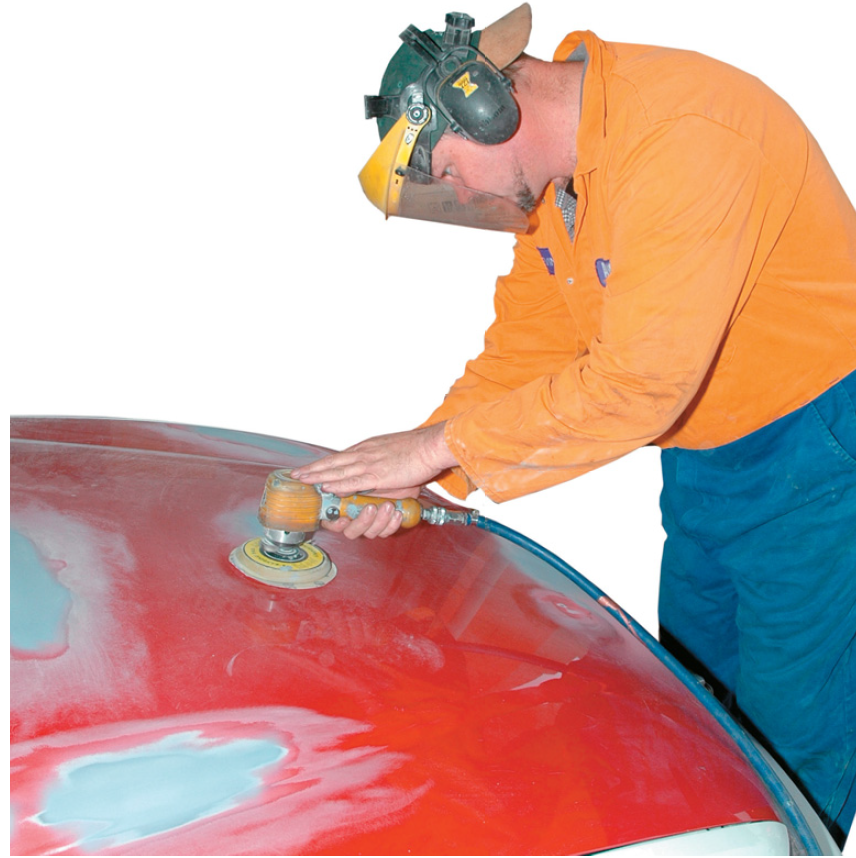
Power source
The most common sources of power are diesel, petrol, electric, or a PTO (power takeoff) generator. These all operate at different efficiencies, hence the unreliable method of assessing a compressor by its horsepower. Even with electric power alone, there can be some confusion, because some manufacturers quote output power while others quote input power.
Electric power also requires care to ensure that the running amps of the compressor do not exceed the rating of the circuit. Machines of 3 hp and up require a 15 amp power supply, while machines up to 2 hp take 10 amps.
Many people have purchased a 15 amp compressor only to find the maximum rating of their circuit is only 10 amps. This can be an issue with workshops where the distance from the main board causes a voltage drop in the circuit. Inadequate power can cause motor overload.
There is potential for the motor to burn out if there is no overload protection either built into the motor or as an add-on.
Drive system
Compressors can be either direct-drive or belt-drive. Direct-drive systems have the motor direct-coupled to the compressor pump. Historically, direct-drive units have been high-revving, designed to operate at 2800 rpm, and priced to suit the budget end of the market. New technology has permitted 4-pole (1400 rpm) direct-drive machines to run more quietly and efficiently than high-revving machines, and they are now suitable as a medium-duty machine for trade use. They can sustain a higher pressure than the high-revving models more easily and can be on par with more traditional belt-drive compressors.
Belt-drive compressors are generally quieter and more efficient than direct-drive machines. You can also choose drive pulleys to enable the compressor pump to run at lower speeds.
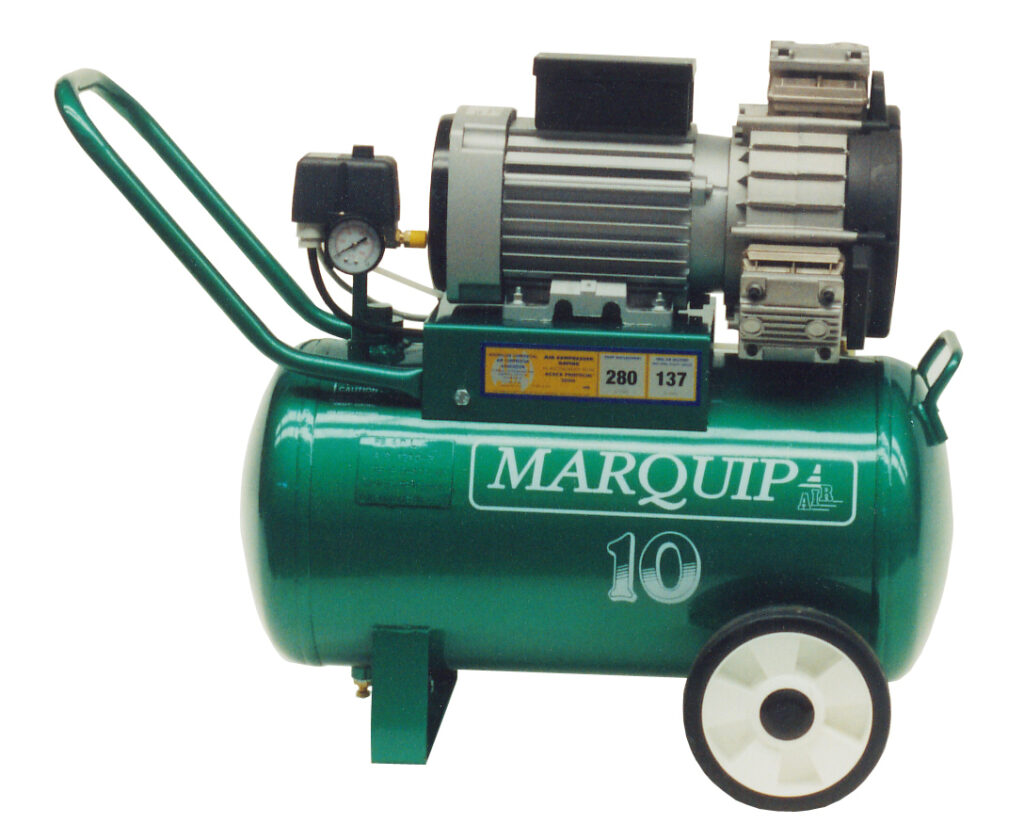
Compressor pumps
Different types of compressor pumps include screw, piston, diaphragm, and rotary vane pumps. Here we will limit the discussion to reciprocating piston-type pumps, the most common type on portable machines.
These pumps can be either cast iron or aluminium. Cast-iron pumps usually operate at lower speeds and are more efficient; aluminium pumps are lighter. Piston pumps may have up to three cylinders and the design of valves, rings, and other components all affect pump efficiency.
Compressors can vary greatly in their output, ranging anywhere from 20 percent to 80 percent efficiency (ratio from FAD divided by displacement). In the case of small, fast-running direct-drive units, valve leakage and losses from around the piston can be higher than 50 percent, meaning that the Free Air Delivery is half the displacement.
Belt-drive units are physically bigger and run at generally lower speeds than direct-drive units so their efficiency is much higher more like 75 percent.
Two compressors side by side may look the same but provide totally different Free Air Delivery; hence the importance of finding out the actual FAD of a compressor (irrespective of horsepower, air displacement, air receiver size, etc).
A further variable is that the compressor may be oil-lubricated or oil-less. Oil-type pumps are more common. From a sump, an oil dipper disperses oil to lubricate the bearings and piston rings. Oil-type pumps are more efficient than oil-less pumps because they suffer less compression loss and dissipate heat better. But they require more maintenance, although this is largely limited to checking and occasionally changing oil. Oilless pumps are more expensive.
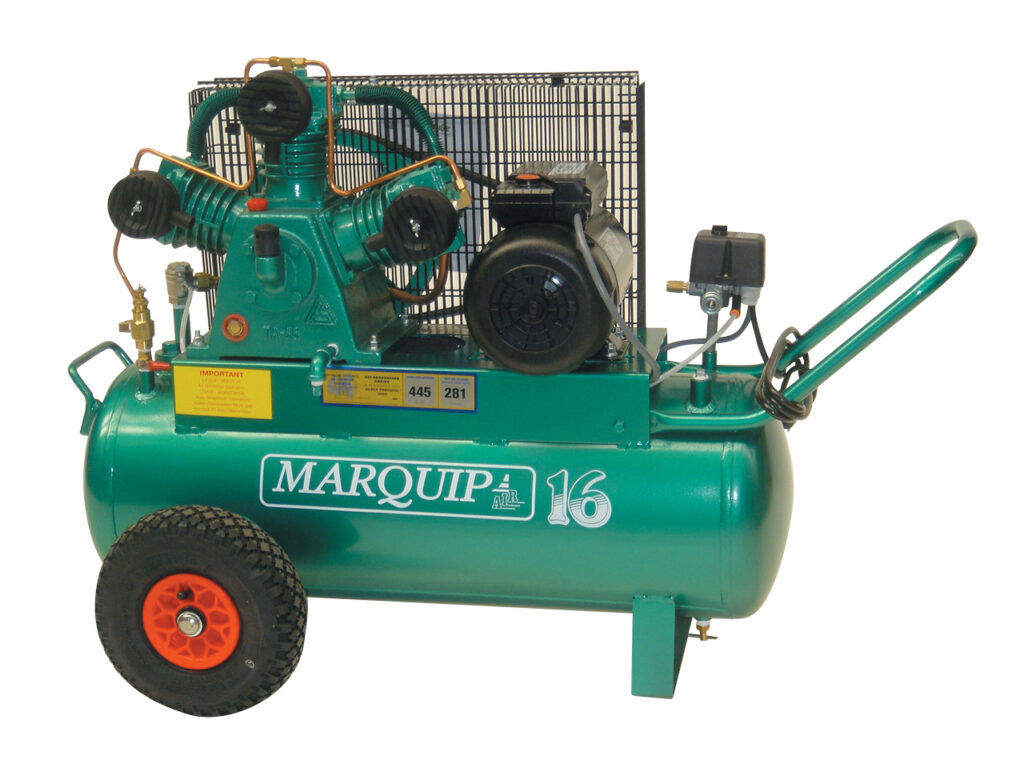
Air receiver
The pump forces compressed air under pressure into the air receiver via a check valve, filling the receiver until it reaches maximum pressure. When air tools are used, compressed air is removed from the air receiver.
The air receiver serves two functions. Its main purpose is to act as a buffer and extend the time between on/off operations, which must not become too frequent. A large air receiver may be a benefit where a short blast of air is required for a specific duration or when there is a desire to reduce background noise from frequent stop/starts.
The second purpose of an air receiver is to gather water. During the process of compressing air, water vapour condenses when it is cooled in the receiver. Air naturally contains a large amount of water vapour, and particularly on humid days a large amount of water can be deposited in the air receiver. (This water should be drained from the air receiver regularly.)
Cut-in, cut-out
Most electric compressors are fitted with a pressure switch. When the pressure in the air receiver goes below a preset level, the compressor commences pumping. It stops when a preset maximum pressure is reached. The difference between cut-in and cut-out pressure is termed the pressure differential.
The number of times an air compressor switches on and off should not be excessive, otherwise, there is a risk the motor will burn out. Some compressors are fitted with a bypass to permit continuous operation. If there are a lot of stop/starts these compressors can be switched to continuous run. A heavy-duty pump and motor are required when a compressor operates continuously in this manner.
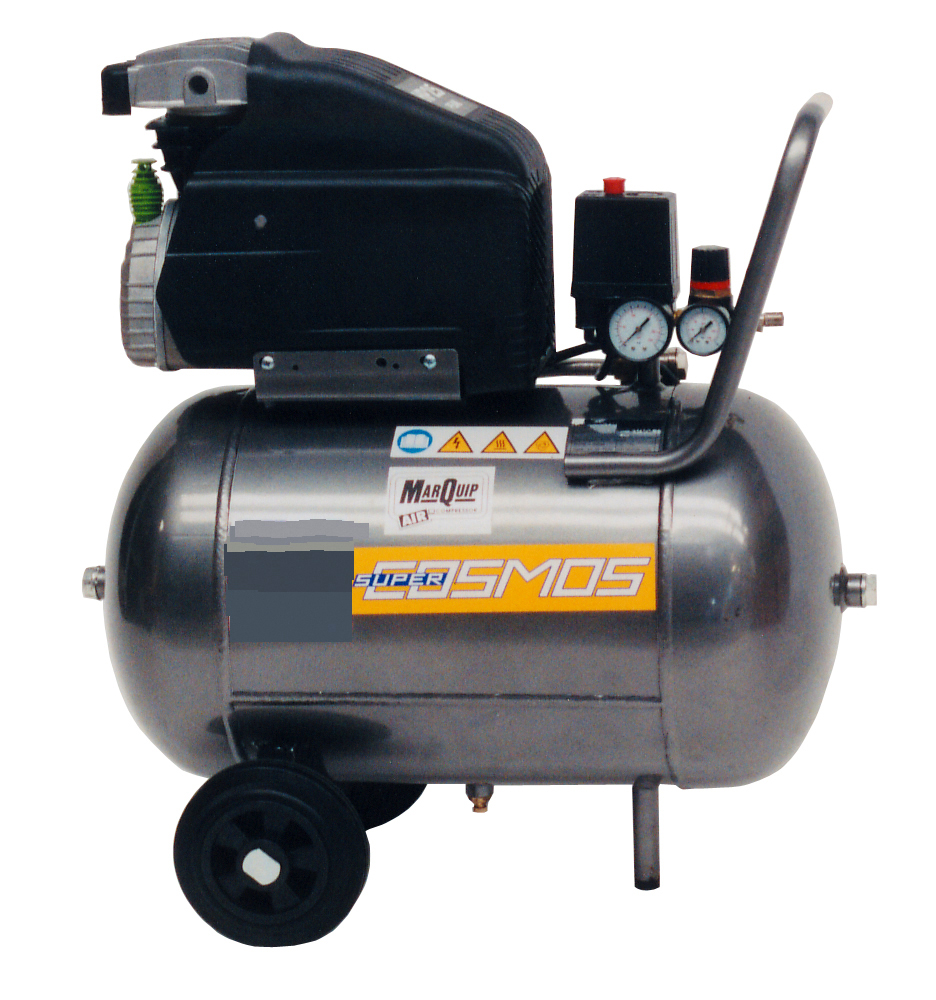
Accessories
Air tools are connected to the air receiver by an air hose. If the hose is too long, pressure losses can occur before the air reaches the tool. But it is better to use a long hose than a long extension lead. If the pressure keeps dropping, it is necessary to increase the diameter of the hose.
Hose fittings may also be a source of lost performance by impeding flow and causing the pressure to drop. High-flow fittings can reduce losses and may be a worthwhile investment to overcome these problems.
A pressure regulator will be required at some point between the air compressor outlet and the air tool inlet. This maintains suitable pressure into the air tool for optimal operation. You will also have to have some form of filtration to remove impurities and the water not trapped in the air receiver.
Some tools also require lubrication to operate satisfactorily. Filters, regulators, and lubricators can be combined in one unit.
Where even better-quality air is required, an air dryer can be used to provide the high-quality air needed, for example, for perfect automotive paint finishes. Desiccant dryers can provide almost moisture-free air which is necessary for air-supply lines for precision instruments.

